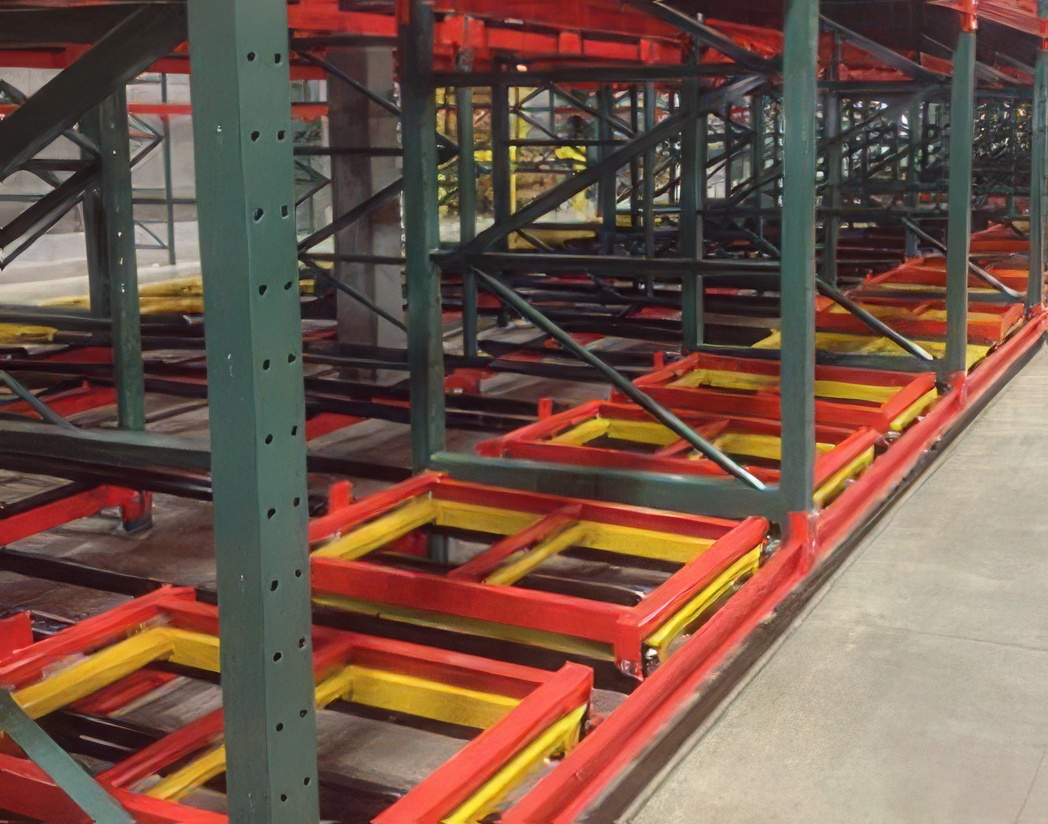What is Pushback Racking?
Posted by Audrey Hood on 31st Oct 2024
As you plan your future operations, you may consider an expansion or want to increase your inventory to meet a rise in demand. However, changes in your warehouse shelving can prove difficult if space is a challenge.
That’s why the storage system you choose is important, as an inefficient system can hinder your ability to expand if you’re not storing inventory efficiently. Pushback racks are industrial shelving solutions that allow for high-density inventory, allowing for changes in inventory and expansion.
What is Pushback Racking?
Pushback racking is a heavy-duty shelf system that allows for high-density storage as inventory can be stored 2 to 6 pallets deep. A great quality about these industrial racks is that they require low maintenance since they are durable.
What is Pushback Racking Ideal for Storing?
These industrial shelving racks are great for high-density storage, especially if your facility is low on space. If you have several SKUs, each level of rack can store different products, making stock rotation easier.
Since these heavy-duty industrial shelves are made for LIFO, it is not great for any perishable goods as the inventory is not rotating. If you are in need of storage for perishable goods, pallet flow racking is ideal as this has a First In, First Out (FIFO) rotation.

How Does Pushback Racking Work?
These industrial heavy-duty shelves use gravity to help with the loading and unloading process. The rails are installed at an incline, so they can slide when placed on the rack.
Pallets are loaded onto nested carts or carriages with a forklift. The forklift will place a pallet on the top of the cart at the front of the bay. The second pallet will then push the first pallet, leaving room for another pallet to be loaded. The last pallet is loaded directly on the bed rails. These then ride along inclined rails inside the pallet rack bay. As the rails are installed on a slight incline, the carts move towards the front of the bay.
For unloading, this process is reversed. Once the first pallet is unloaded with a forklift, the pallet behind it on the cart will move forward to the front of the bay (since these are inclined).
What Makes this Racking Different?
This type of heavy-duty shelving allows storage for 2-6 pallets deep in the same bay. The depth of pushback racking has 90% more storage density than other racks such as standard selective racking.
This industrial shelving is made for Last In, First Out (LIFO) product rotation. Because of this, inventory is loaded and unloaded at the front of the bay. That means that an aisle in the back of the bay is not necessary, allowing for flexibility if you want these industrial shelving units against a wall in your facility.
With the way that the pallets are loaded and unloaded, there is a smaller chance of damage to the racking. Since a forklift is not needed to drive back and forth in the racks, the uprights are less likely to be hit with a forklift. With heavy-duty racking like drive-in racking, a forklift is needed to do all the loading and unloading. This heavy-duty industrial shelf has a quicker process for loading and unloading.

What are the Main Components of Pushback Racking?
- Rack
- This racking uses structural or roll-formed pallet racking uprights and beams as the framing for this system. Frames can be adjusted for the correct height to best meet your needs.
- Rails
- Heavy-duty rails are used in this racking to move pallets.
- Carts
- Heavy-duty carts are nestled on top of the bed rails. These carts can hold non-standard pallet sizes, with capacities varying up to 1,360 kg. Customization for heavier capacities is available.
Choosing the right industrial shelving storage is essential in keeping your operations running, workers safe, and end users happy. As mentioned above, pushback racking might be ideal if you are in need of high-density storage. If you’re not sure, reach out to Industrial Shelving Systems, and we can help you determine the best industrial warehouse shelves for your facility. With an efficient storage design, you’ll be able to achieve your long-term goals. Contact us here to get started.

 US Dollar
US Dollar
